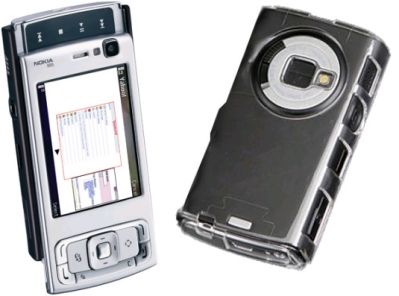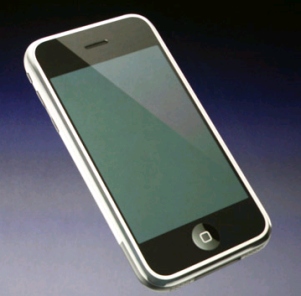While in Monaco, as part of the inevitable discussion on Apple’s Video iPod with a GSM circuit (the iPhone), someone complained about the N95. In all seriousness, he declared, the problem with the N95 is the buttons. Have you counted how many buttons are on the outside of that thing? Eighteen. Eighteen! That’s just crazy!
Actually, it’s not. I think the external buttons and layout are one of the best features of the N95. There’s something reassuring about a physical movement behind a key. The knowledge that you can reach functions of your phone no matter what ‘mode’ it is in… and you can do it without looking.

Let’s dwell on that button for the camera for a moment. Getting to the camera application on the N95 no matter where you are is a simple move. You open the lens cover, which is something physical, with good haptic feedback. Now taking a picture isn’t a case of searching for an on-screen touch button, it’s a physical press. Actually two presses… a slight depression to ‘lock on’ and sort out focus, and a deeper press to take the picture.
Physical buttons just work. Muscle memory in your hand will lead you automatically to these buttons after using a device for a short time. The cursor/d-pad on any phone is a case in point. They seem strange as you pick up a new device, but you’re dancing over it in short time, with little error.
For all that the iPhone is sporting an innovative multi-touch interface, it lacks everything a physical button can deliver to create a good mobile experience. Not least because you’ll need to look at its screen to do anything, including inputting text. And I think that’s going to be the make or break on the iPhone as a smartphone (after all, video and audio playback I think they can manage easily). But if you’ve seen the speed that a regular user of T9 can get up to (in many cases while walking down the street, chatting to a friend, and watching out for traffic), you’ll realise that text input is still the biggest limitation and drawback for any smartphone.

Your trade off is either a larger size (and go Qwerty), the expense and complexity of a touch screen with either an on-screen keyboard (urgh) or character recognition (and natural handwriting is still somewhat tricky), or go for estoric mechanisms (such as T9 or star-tap) on a regular numeric keypad.
Without a doubt, in a regular phone, T9 is the choice of the manufacturers and accepted by the public. The battle to establish a dominant input system on smartphones (and to make sure that your company holds the patent when the music stops) could be just as important as how many units a device sells. Capture the public’s imagination and have sufficient numbers of them asking for your variant, and you’re guaranteed a future. AOL (new owners of the patent) managed that with T9. Nokia are close to having S60 accepted as a smartphone UI of choice. Apple are hoping multi-touch will be wanted for for the new devices coming through.
Now that the hardware of a smartphone has been pretty much agreed on (camera, MP3 audio, video playback, good synchronisation, full blown web browser - the jury is out on GPS), the battleground is now going to move to the human/computer interface. Tactile keys, 'elegantly clear' touchscreen or a mixture of the two? Windows Mobile, Palm, UIQ, Apple or S60. There's a lot of choice out there - you decide!
Ewan Spence, 13 June 2007
